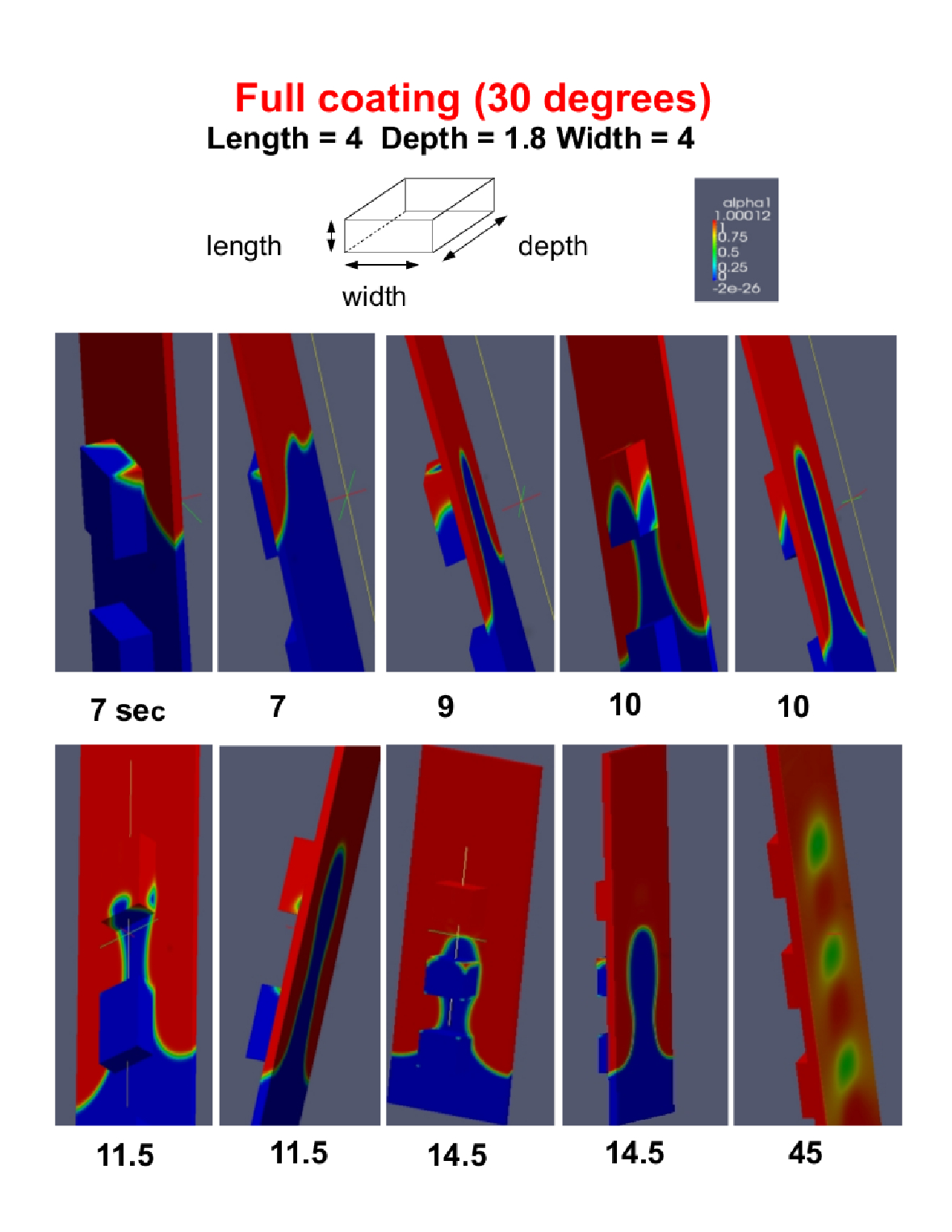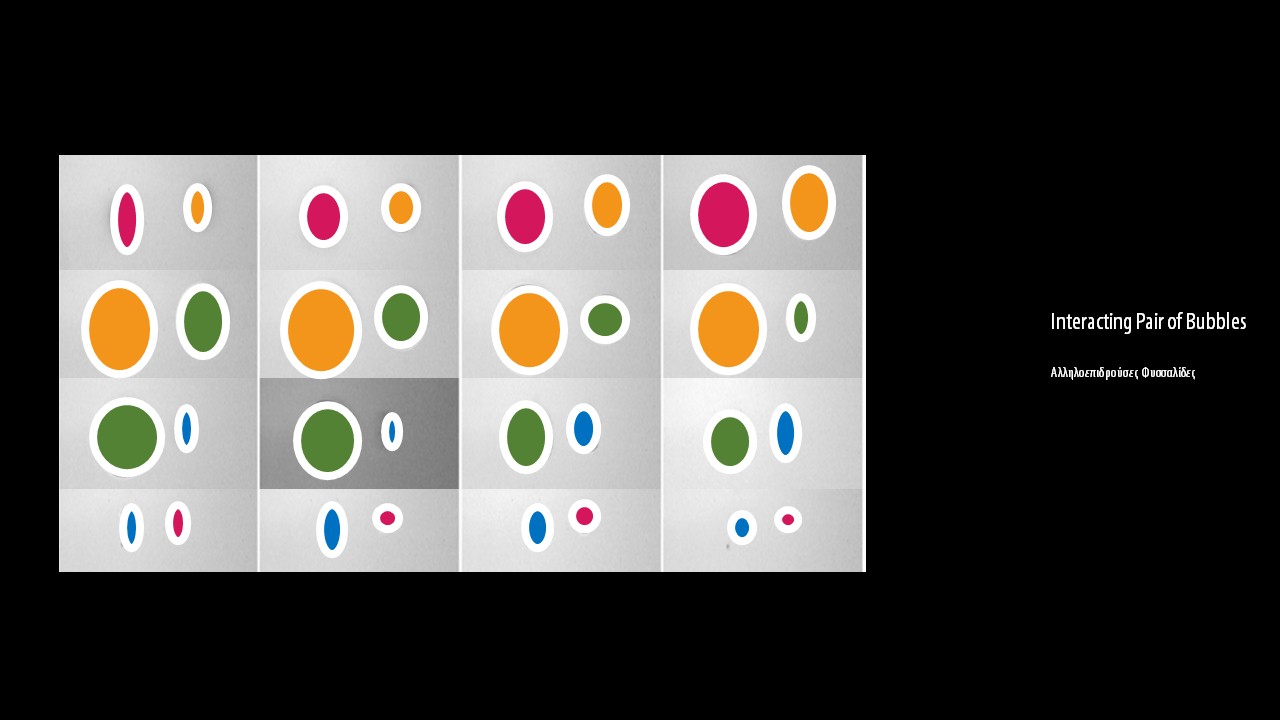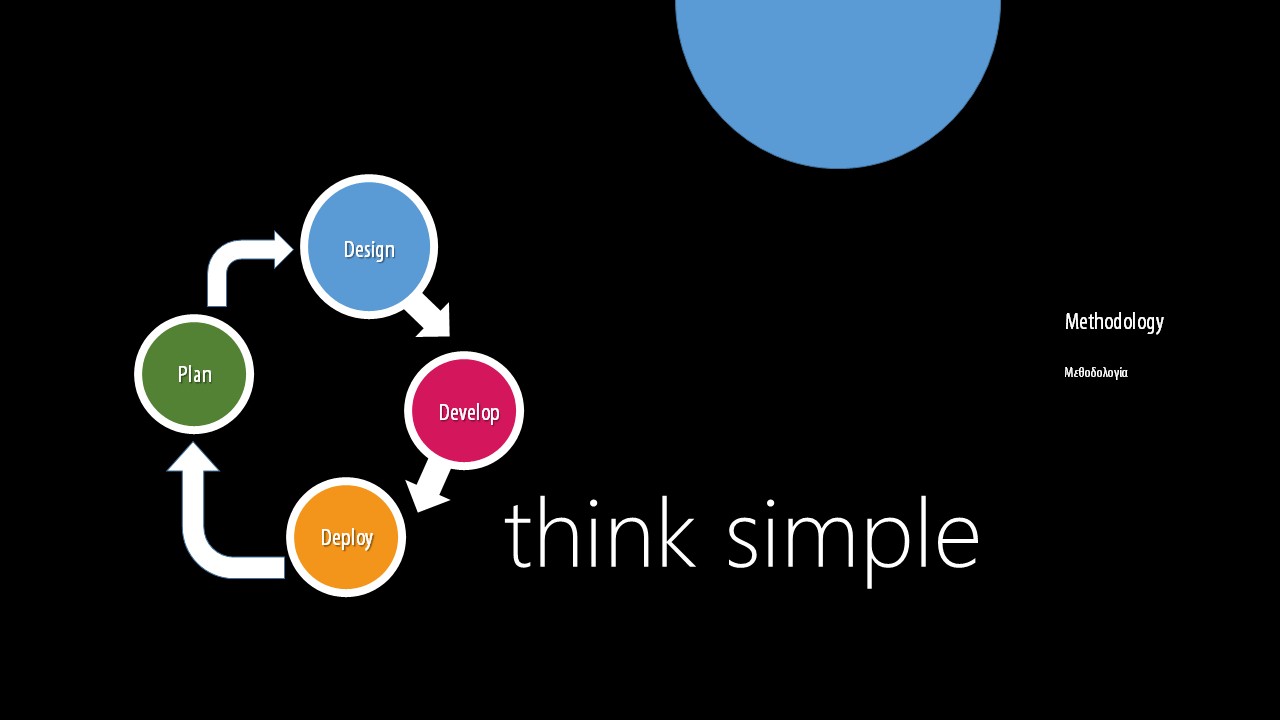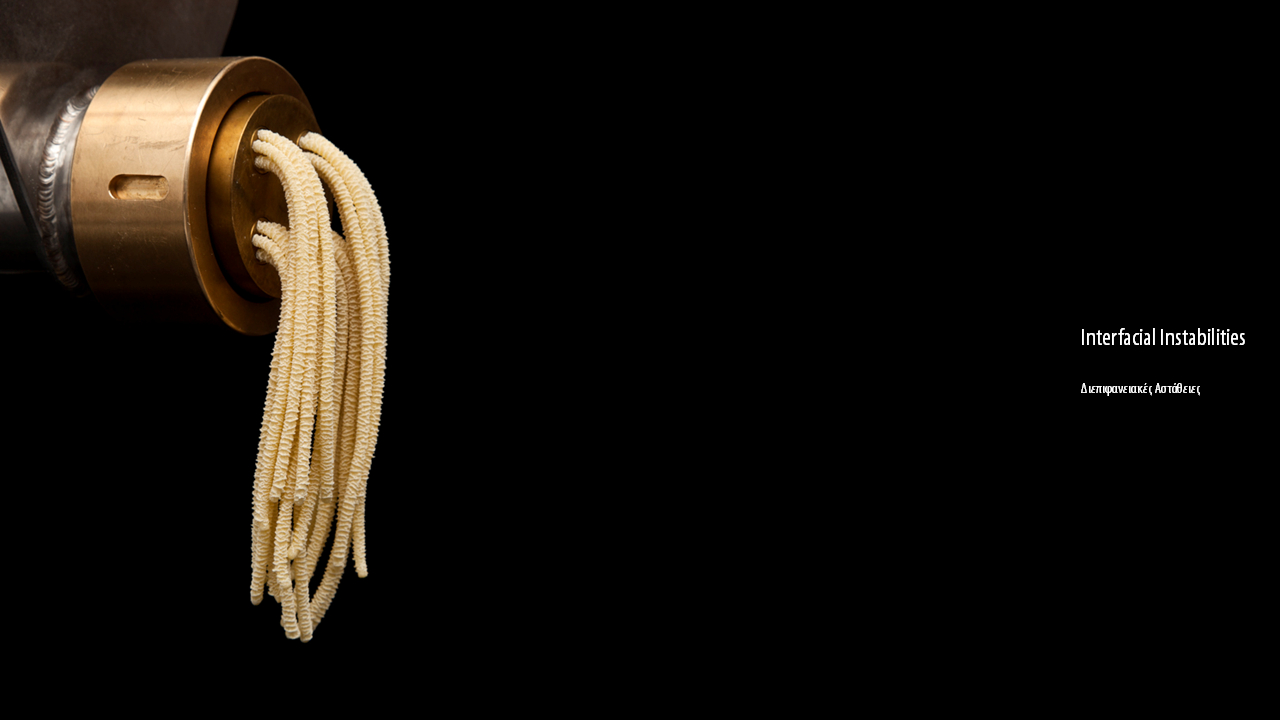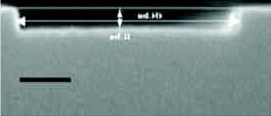
During fabrication of microelectronic components, polymer solutions are used to produce thin films over surfaces with uneven topography. The patterning of the substrates may require using multilayer coatings, where one of the purposes of the bottom layer is to planarize the topography, i.e. to smooth out the uneven topography. A non-uniform coating leads to low quality products or to manufacturing failures.
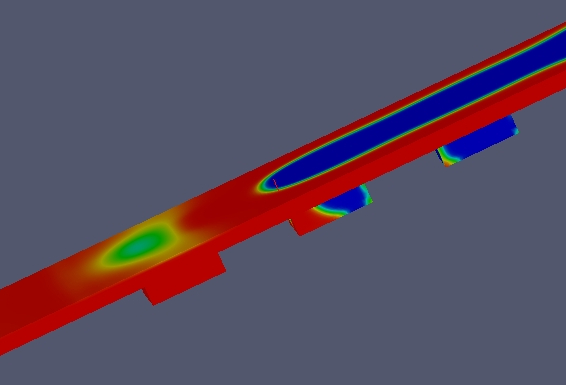
The problem of liquid advancing over orthogonal 2D and 3D substrates with variable depth, width and length under the influence of the gravitational force resulting in different physical phenomena is addressed.
Firstly, we can achieve continuous coating by which a thin film of fluid is developed throughout the trench while a steady flow of fluid is established upstream and downstream the topography which is welcome by coating of microelectronic devices.
Secondly, we may result in poor coating, namely the entrainment of air between the trenches of the substrate and the coating liquid inducing less fluid friction, therefore desirable in producing super-hydrophobic surfaces for microfluidic applications.
The software tool used is the application interFoam comprised in the OpenFOAM open source CFD software package for simulation of two-phase flow of two immiscible fluids, namely air and a viscous liquid. All calculations were implemented on the laboratory HPC clusters using Message Passing Interface (MPI).
Snapshots of the the covering process (red color: liquid, blue color: water).
